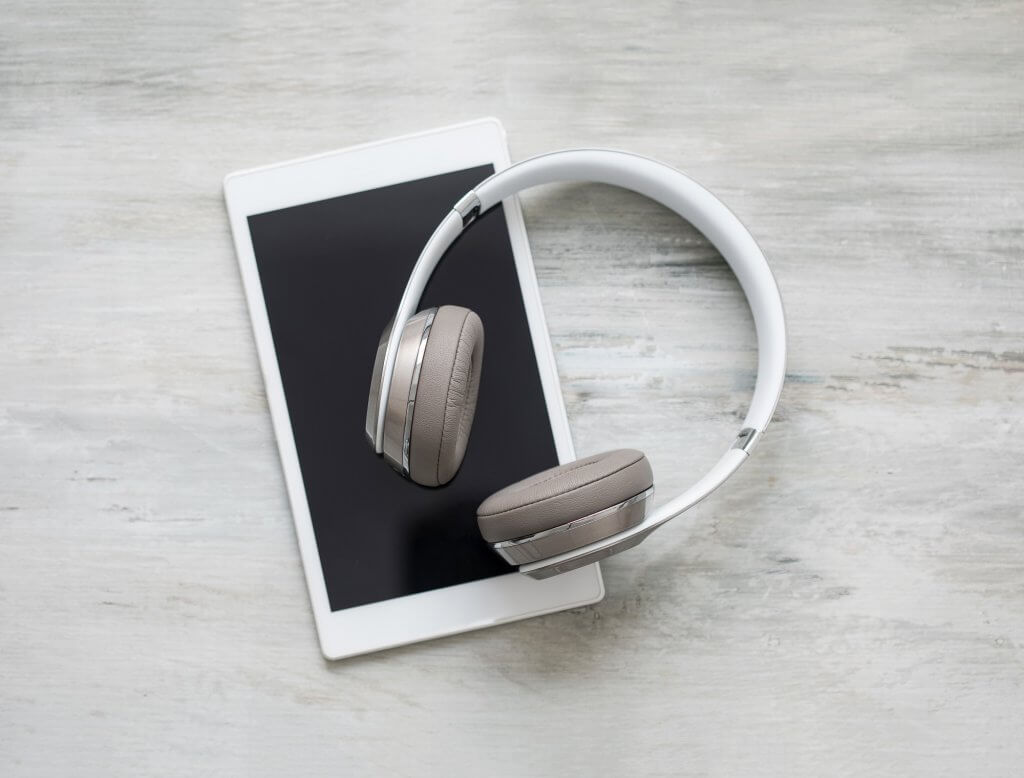Walk down any street in the UK and you’ll soon spot someone wearing a pair of headphones. The smartphone revolution has meant headphones – the smartphone’s natural bed-fellow – are ten-a-penny. Research from GfK (Growth from Knowledge) shows that sales of headphones climbed 36% between 2013 and 2017.
But our love of headphones means we’re pumping sound directly into our ear canals, and it’s putting our hearing at risk. The delicate receptors in your inner ear are irreplaceable: they never grow back once they’ve been damaged by exposure to excessively loud noise. In fact, it’s safe to say that if you use headphones regularly, there’s a good chance you’ll need a hearing test or tinnitus treatment sooner than you think.
Your smartphone’s built-in volume limiter
Despite the risks posed by headphones, EU law has put in place some measures to help protect your hearing. For smartphones and music players, EU law limits their sound output to 100 decibels (compared to as much as 120 decibels in other regions).
While that’s still over the safe limit, it means we can listen to music at full volume for about 15 minutes before our hearing is at risk.
How to set limits on your phone
Thankfully, you can lower this maximum volume limit. Both Android and Apple devices have volume limiting features built-in.
On Apple devices, you can limit the maximum headphone volume to 85dB (the accepted safe level for prolonged listening) by going to Settings > Music > Volume Limit and enabling the ‘EU Volume Limit’ option.
On Android devices you can lower the limit manually by going to Settings > Sound > Volume and lowering the media volume slider. Try 50-60% to start with and see how you get on. Apps are also available to help you limit the volume.
Unfortunately, volume limiters probably aren’t enough to keep your hearing safe – there’s always the temptation to remove the volume limit altogether. So how about the headphones themselves? Are some types of headphones more damaging to our hearing than others?
Benefits of noise cancelling headphones
You might have heard of ‘noise cancelling’ headphones, which reduce external ambient sounds to help you enjoy your music, films or podcasts with fewer outside distractions.
Some headphones are marketed as ‘passive’ noise cancelling, which is a low-tech solution to the noise leakage problem. Passive noise cancelling headphones physically plug into your ears, much the same as earplugs.
The cheaper option
They use silicon rubber or foam earbuds to form a seal in your ear canal, suppressing the background noise in a coffee shop or rumble of a passing bus.
Less ambient noise means you can also, hopefully, turn down the volume of your music, and in turn, protect your hearing.
The pricier option
The wonder of technology lets us go a step further. ‘Active noise cancelling’ brings some true digital magic to your listening experience.
They need batteries to work, but the result is much more effective than passive noise cancelling.
Sound can cancel out sound
So how does it work? Active noise cancelling headphones ‘listen’ to noises from the outside world and fire the exact opposite sound at your ears. This cancels out the sound, greatly reducing it and sometimes silencing it completely. Some sounds still make it through, but they’re a whole lot quieter.
The technology has been around for more than 30 years (Bose released the first consumer model in 1989) but it’s come of age in the last 5 years. It’s well worth trying a pair.
But which is best?
Ultimately, active earphones provide greater hearing protection. The main benefit of noise cancelling headphones is that they do exactly that: cancel out all background noises. So whether you’re out for a run, walking the dog or catching the tube to work, you can turn the volume down and stop fighting sound leakage from the outside world.
The World Health Organisation (WHO) estimates that 50% of teenagers and young adults between the age of 12 and 35 are exposed to unsafe levels of sound from audio devices. Prolonged exposure to sound levels over 85 decibels can be dangerous for our hearing, so anything that helps keep that volume down is a good thing.
For us, it’s a big thumbs up for active noise cancelling headphones.
Who to buy?
While you can pick up passive headphones in most supermarkets for under a tenner, active headphones come at a higher price. Current market leaders are Bose and Sony, both of which offer premium active noise cancelling headphones retailing between £250 and £300. This might seem a little steep, but prices are slowly coming down and you can pick up lower-cost alternatives for around £50 or even less.
Is active noise cancelling safe?
The short answer is yes. However, some people do report feeling a little dizzy or disorientated by the feeling of slight pressure that wearers experience for the first few days. Current research is limited, but it seems this doesn’t cause long-term damage.
Book a free hearing test today
If you’ve been a lifelong headphones user and are worried about your hearing, book a free hearing test with our friendly THCP audiologists by calling 0800 52 00 546. You can also book online or pop into your nearest THCP practice.

